1. Bennu: A Window to the Early Solar System

Discovered in 1999, asteroid 101955 Bennu is a near-Earth object about 1,610 feet in diameter – roughly the height of the Empire State Building. Named after an ancient Egyptian deity, Bennu orbits the Sun every 1.2 years and passes close to Earth every six years. NASA selected Bennu as the target for its OSIRIS-REx mission due to its size, composition, and accessibility. As a primitive asteroid, Bennu is believed to have remained largely unchanged since the formation of our solar system 4.6 billion years ago, making it an ideal subject for studying the early stages of planetary formation and potentially the origins of life on Earth.
Bennu’s surface is covered with boulders and large rocks, with the largest, nicknamed “Mount Doom,” measuring 190 feet across – nearly as wide as an NFL football field. The asteroid’s dark, carbon-rich surface reflects only 4% of the light that hits it, about as dark as fresh asphalt. This composition suggests Bennu could contain organic molecules and volatiles – compounds that easily vaporize at low temperatures – dating back to the birth of the solar system.
2. Life’s Building Blocks Found on an Asteroid
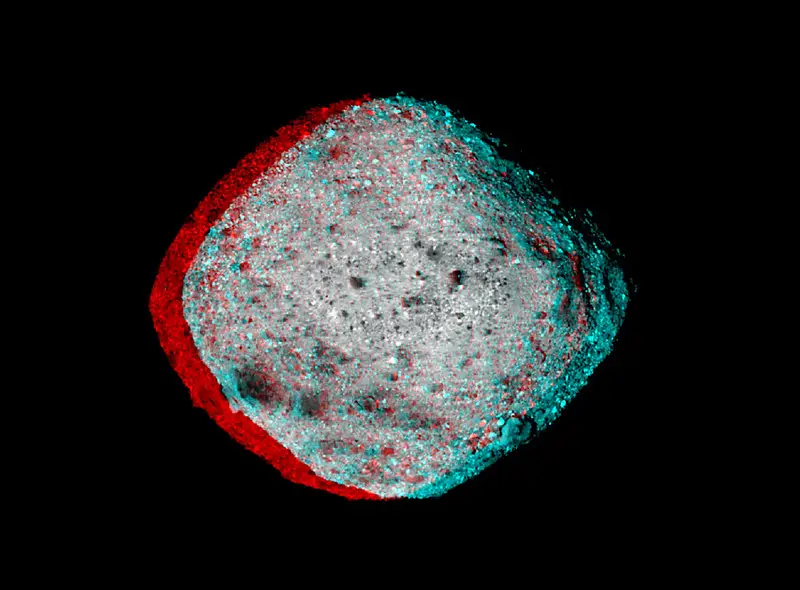
NASA’s OSIRIS-REx spacecraft brought back groundbreaking discoveries from asteroid Bennu. Scientists at NASA’s Goddard Space Flight Center found all five nucleobases used in DNA and RNA, plus 14 out of 20 amino acids used to build proteins in living things. It’s like discovering a complete cosmic cookbook for life! The samples contained about 5% carbon, 50 times more than Earth’s crust, and 100 times more ammonia than Earth’s soil, according to Nature Astronomy. This high concentration of organic materials suggests that the ingredients for life might be common in space, potentially increasing the chances of life existing elsewhere in the universe.
OSIRIS-REx traveled over 200 million miles, bringing back 121.6 grams (4.3 ounces) of asteroid material – more than double the mission’s goal. That’s like traveling from New York to Los Angeles and back 50 times for a handful of space dust! This sample, about the weight of a baseball, could help explain how life began on Earth and if it might exist elsewhere in the universe. The pristine nature of these samples, untainted by Earth’s atmosphere, gives scientists unprecedented confidence in their extraterrestrial origin. As Dr. Jason Dworkin, a senior scientist at NASA’s Goddard Space Flight Center, noted, “We’re seeing chemistry that could have led to life happening in the solar system, in a place other than Earth.”
3. Evidence of Ancient Water on an Asteroid
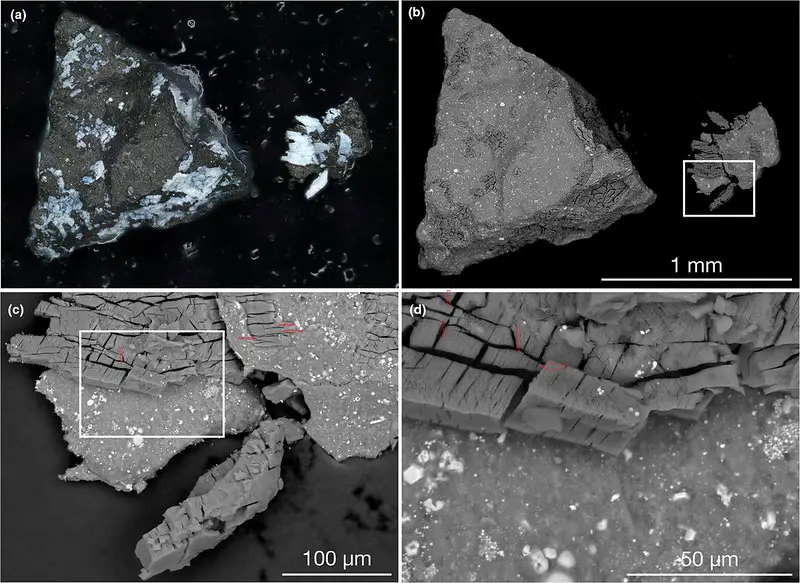
Bennu’s samples revealed a surprising watery past in space. University of Arizona scientists found 11 minerals associated with salt deposits from ancient brine, suggesting Bennu’s parent asteroid once had salty underground rivers or seas. Imagine an asteroid with as much water as Lake Michigan – that’s 1,180 cubic miles of water! This discovery indicates that liquid water was present on the parent body for an extended period, possibly millions of years, providing ample time for complex chemical reactions to occur.
According to Nature, this watery environment existed millions of years ago. Bennu, only 1,614 feet wide – about as tall as the Empire State Building – shows even small asteroids can have complex, watery histories. The largest boulder on Bennu, “Mount Doom,” is 190 feet across, nearly as wide as an NFL football field! These discoveries suggest asteroids could have been cosmic chemistry labs, potentially brewing the precursors to life billions of years ago. The presence of water-altered minerals also provides insights into the thermal and chemical evolution of asteroids, helping scientists better understand the early solar system’s dynamics. As Dr. Dante Lauretta, principal investigator of the OSIRIS-REx mission, stated, “These findings will help us unravel the mysteries of our cosmic neighborhood and our place within it.”
4. Cosmic Delivery Service: Seeding Life on Earth?

The Bennu samples have reignited the debate about life’s origins on Earth. The presence of all five nucleobases used in DNA and RNA, along with 14 of the 20 amino acids used in terrestrial biology, supports the theory that asteroids and comets may have delivered these crucial ingredients to our planet billions of years ago. NASA researchers found that this cosmic delivery service could have jump-started life on our planet, providing the necessary chemical ingredients in a pre-packaged form.
Interestingly, unlike life on Earth which predominantly uses “left-handed” amino acids, the Bennu samples contained equal amounts of left and right-handed versions. This symmetry challenges existing theories about how life’s chirality developed and opens new avenues for research into life’s origins. Moreover, the samples contained about 100 times more ammonia than Earth’s soil, painting a picture of a primordial soup ripe for life’s emergence. The isotopic composition of these compounds differs from what’s typically found on Earth, indicating they formed in colder environments, possibly in the outer solar system or in molecular clouds before our solar system formed. As Nicky Fox, associate administrator for NASA’s Science Mission Directorate, noted, “This really is a groundbreaking scientific discovery.”
5. Mineral Mysteries: Clues to Bennu’s Past
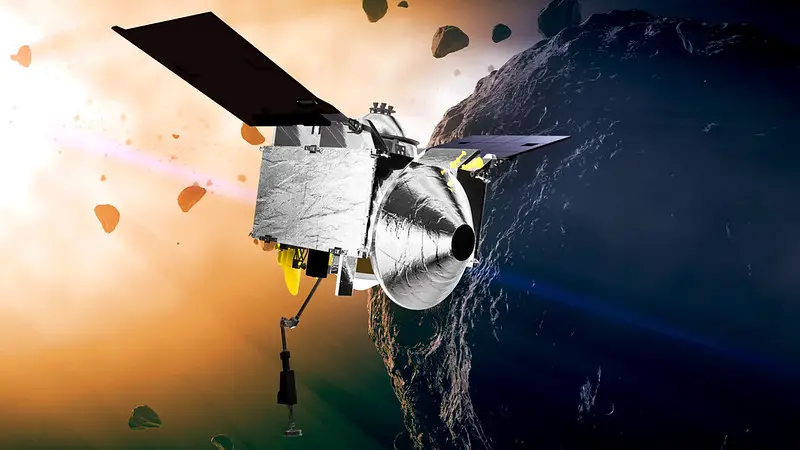
Bennu contains a surprising reservoir of minerals, including a newly discovered magnesium-sodium phosphate mineral rarely found in astromaterials. Jessica Barnes, an assistant professor at the Lunar and Planetary Laboratory, explained that this mineral’s presence can help infer different episodes of geologic activity on Bennu’s parent body. The samples also revealed water-bearing minerals like carbonates, sulfites, olivine, and magnetite, providing tangible evidence of multiple water-related episodes in Bennu’s history.
According to a study published in Nature, this watery environment existed millions of years ago. The presence of these diverse minerals suggests that Bennu’s parent body underwent complex geological processes, including hydrothermal activity, which could have created environments conducive to the formation of organic compounds. Scientists discovered sodium-rich minerals similar to those found in ancient dry lake beds on Earth, suggesting that Bennu’s parent body once had an extensive network of salty, underground water. Dr. Queenie Chan from Royal Holloway, University of London, explained: “The parent body of Bennu would have been like a giant, salty, muddy snowball.” These findings challenge previous assumptions about the early solar system and the distribution of life’s essential elements.
6. Bennu’s Family Tree: A Chip Off the Old Block
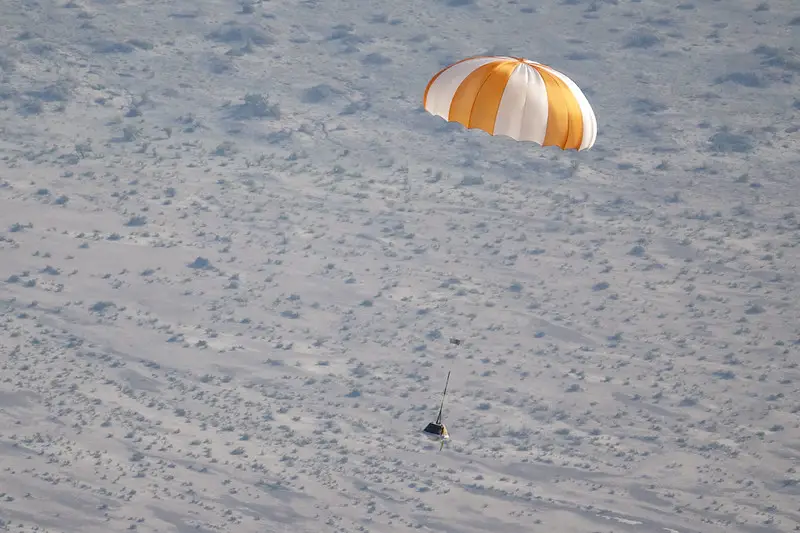
Evidence suggests Bennu is comprised of fragments from a much larger world, possibly 62 miles across or larger, that was destroyed around a billion years ago. Lauretta explained that this parent body likely formed far out in the solar system where temperatures allowed ammonia, carbon dioxide, and methane to accrete as ice. This parent asteroid was about the size of Rhode Island, floating in space! The collision that created Bennu was so powerful it would be like setting off all of Earth’s nuclear weapons at once.
The discovery of the magnesium-sodium phosphate mineral hints at Bennu’s possible origin from a small, primitive ocean world. This new mineral provides crucial evidence about the complex geological processes that occurred on Bennu’s parent body. By studying Bennu, scientists are piecing together the story of how asteroids form and change over time, which could help us understand how Earth got its ingredients for life. It’s like solving a billion-year-old family mystery that spans the entire solar system.
7. Technological Breakthroughs: Pushing the Boundaries
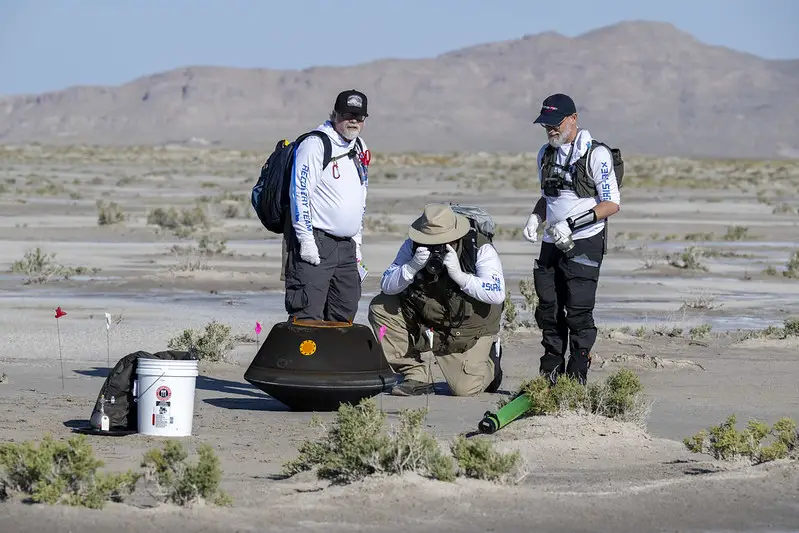
The analysis of Bennu’s samples has pushed the boundaries of scientific instrumentation and analytical techniques. Researchers used a combination of state-of-the-art methods, including liquid chromatography-mass spectrometry, gas chromatography-mass spectrometry, and high-resolution transmission electron microscopy. These techniques allowed scientists to identify and quantify organic compounds present in incredibly small amounts – sometimes just a few parts per billion. To put this in perspective, it’s like finding a single grain of sugar in an Olympic-sized swimming pool!
One particularly innovative technique used was the application of cryogenic transmission electron microscopy. This method involves flash-freezing samples to temperatures as low as -292°F to preserve their structure and then examining them with an electron microscope. This approach allowed researchers to study the delicate organic structures in the Bennu samples without damaging them, providing unprecedented insights into their composition and formation. According to Meteoritics & Planetary Science, these technological advancements not only benefit asteroid research but also have applications in fields ranging from materials science to medical research.
8. Comparative Planetology: Bennu and Beyond
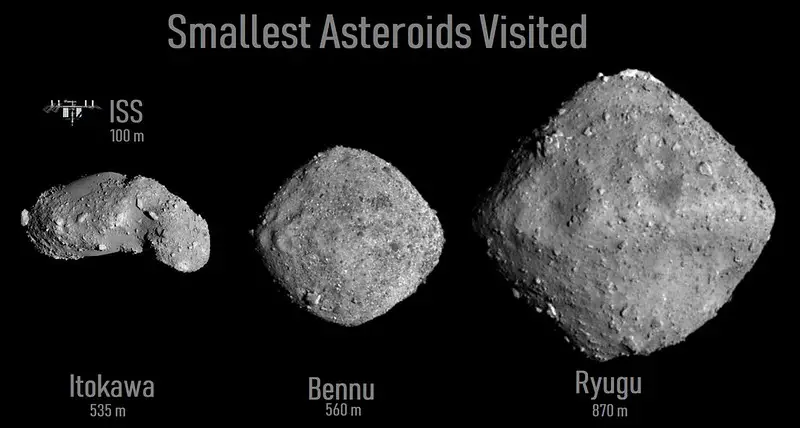
The study of Bennu provides a valuable data point in the field of comparative planetology. By comparing Bennu’s composition to that of other asteroids, comets, and planets, scientists can build a more comprehensive understanding of how our solar system formed and evolved. For instance, the Japanese Hayabusa2 mission returned samples from asteroid Ryugu in 2020, allowing for direct comparisons between two different types of carbonaceous asteroids. Both Bennu and Ryugu are about the same size – roughly 3,000 feet across – but they show distinct differences in their surface features and composition.
These comparisons reveal both similarities and differences. Like Bennu, Ryugu contains organic compounds, but the specific types and concentrations vary. Both asteroids show evidence of past water activity, but the extent and nature of this activity differ. The presence of all five nucleobases in Bennu’s samples, compared to only three found in Ryugu’s, suggests that Bennu may have experienced more favorable conditions for the development of complex organic molecules. By studying these variations, scientists can map out the diverse chemical and physical processes that occurred in different parts of the early solar system. As Science reports, it’s like having two different time capsules from the early solar system to compare and contrast.
9. The Hunt for Extraterrestrial Life: New Horizons
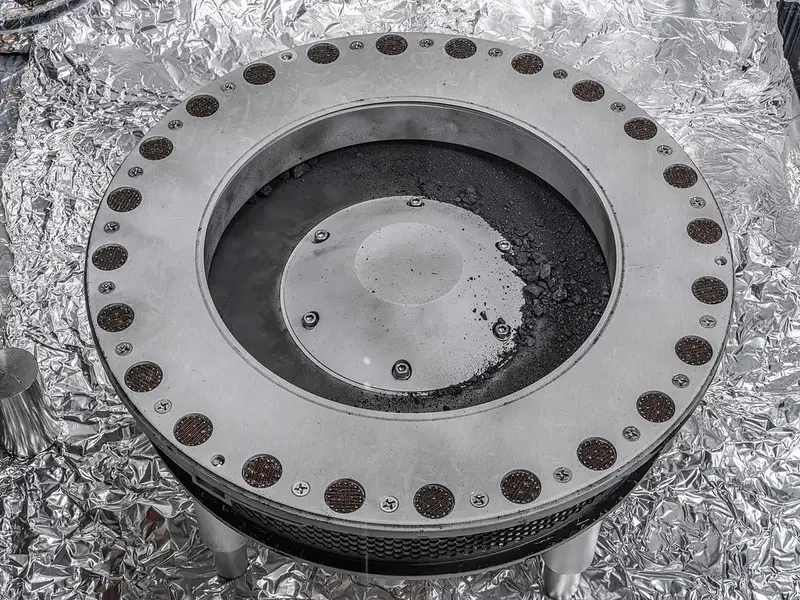
The discovery of life’s building blocks on Bennu has significant implications for the search for extraterrestrial life. If these organic compounds are common on asteroids, they might also be prevalent on other celestial bodies, including moons and planets in our solar system and beyond. This bolsters the case for exploring places like Europa (Jupiter’s moon) or Enceladus (Saturn’s moon), which are believed to have subsurface oceans that could potentially harbor life. Europa’s ocean is estimated to be 60 miles deep – that’s more than twice as deep as Earth’s Mariana Trench!
Moreover, the findings from Bennu provide a blueprint for what to look for in future missions aimed at detecting signs of life. The specific organic compounds, their concentrations, and the environmental conditions in which they form offer valuable clues for astrobiologists. This knowledge will inform the design of future space missions and the development of more sensitive detection instruments. As Dr. Dworkin puts it, “We’re learning what to look for, and how to look for it, in our quest to understand if we’re alone in the universe.” According to Astrobiology, the Bennu samples have effectively provided a “chemical fingerprint” of prebiotic environments, which scientists can use as a reference in the ongoing search for life beyond Earth.
10. Future Exploration: Building on Bennu’s Discoveries
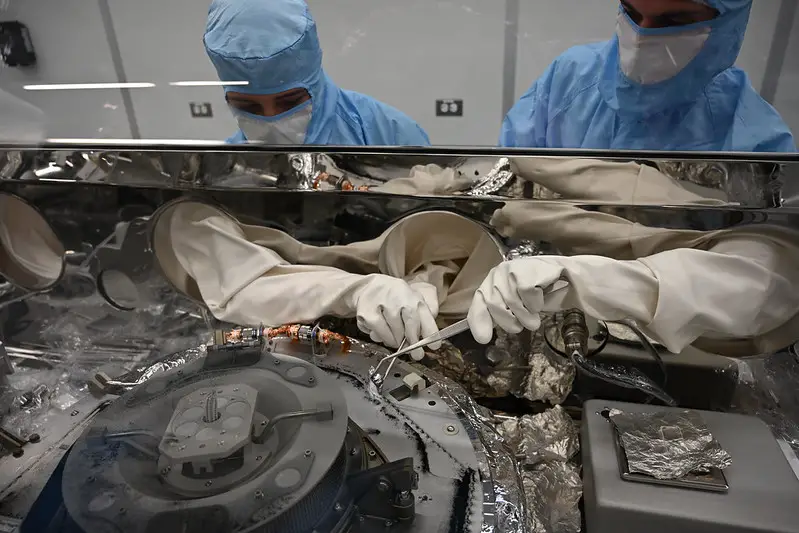
The success of the OSIRIS-REx mission and its groundbreaking findings have set the stage for future asteroid exploration missions. NASA is already planning the OSIRIS-APEX mission, which will repurpose the OSIRIS-REx spacecraft to study another near-Earth asteroid, Apophis. This asteroid is about 1,100 feet wide and will pass within 20,000 miles of Earth in 2029 – that’s closer than some of our satellites! This close approach provides a unique opportunity to study an asteroid up close and personal.
Other space agencies are also ramping up their asteroid exploration efforts. The European Space Agency’s Hera mission, set to launch in 2024, will study the effects of NASA’s DART mission on the asteroid Dimorphos, furthering our understanding of asteroid deflection techniques. These ongoing and future missions will continue to unlock the secrets of our cosmic neighborhood and deepen our understanding of the origins of life in the universe. As NASA Administrator Bill Nelson stated, “The OSIRIS-REx sample is the biggest carbon-rich asteroid sample ever delivered to Earth and will help scientists investigate the origins of life on our own planet for generations to come.”
11. Planetary Defense: Knowing Our Cosmic Neighbors

While the primary focus of the OSIRIS-REx mission was scientific discovery, the detailed study of Bennu also has implications for planetary defense. Bennu is classified as a potentially hazardous asteroid due to its size and orbit, which brings it close to Earth every six years. The mission provided precise measurements of Bennu’s size, shape, mass, and composition, all crucial factors in predicting its future trajectory and potential impact risk. OSIRIS-REx determined that Bennu has a mean diameter of 1,610 feet and a mass of about 73 billion kilograms – that’s equivalent to about 22 Empire State Buildings!
One surprising discovery was the detection of the Yarkovsky effect – a force caused by the uneven heating and cooling of the asteroid’s surface as it rotates. This effect can gradually change an asteroid’s orbit over time. By accurately measuring this effect on Bennu, scientists can better predict the long-term trajectories of other near-Earth asteroids. According to NASA, these findings have significantly improved our ability to determine the total impact probability and predict orbits of other asteroids. For Bennu specifically, the cumulative probability of impact through the year 2300 is about 1 in 1,750 (or 0.057%). While this is a low probability, the study of Bennu helps refine our planetary defense strategies for all potential asteroid threats.


